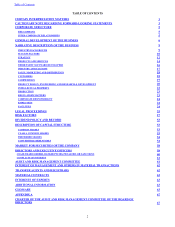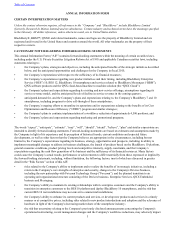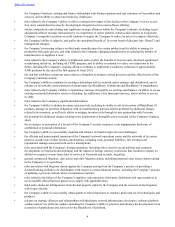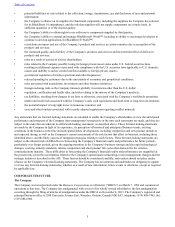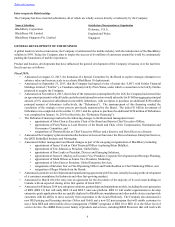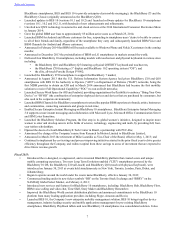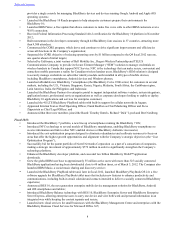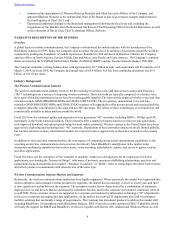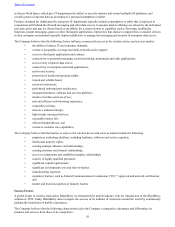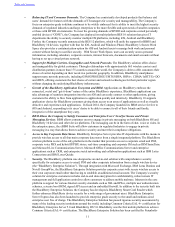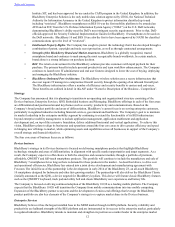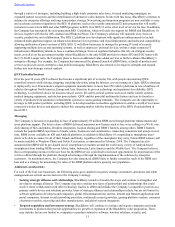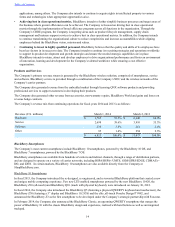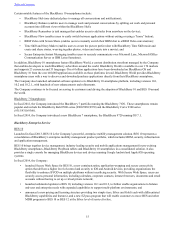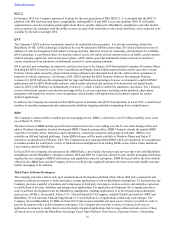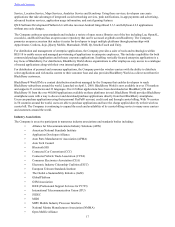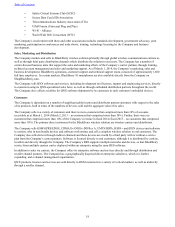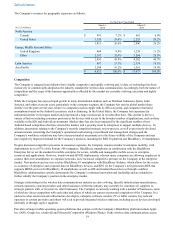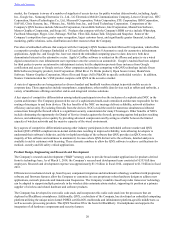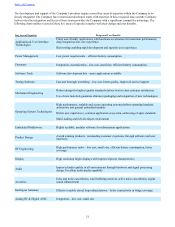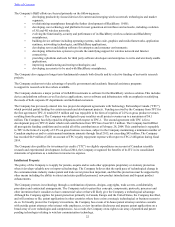Blackberry 2014 Annual Report Download - page 20
Download and view the complete annual report
Please find page 20 of the 2014 Blackberry annual report below. You can navigate through the pages in the report by either clicking on the pages listed below, or by using the keyword search tool below to find specific information within the annual report.
12
Institute SIT, and has been approved for use under the CAPS program in the United Kingdom. In addition, the
BlackBerry Enterprise Solution is the only mobile data solution approved by CESG, the National Technical
Authority for Information Assurance in the United Kingdom to protect information classified up to and
including “restricted”. BlackBerry smartphones on BES 10 was the first mobility platform to be awarded an
ATO and an FOC from the U.S. Defense Information System Agency (“DISA”) on the U.S. DoD networks,
demonstrating BlackBerry’s ability meet the DoD’s most stringent security requirements. Prior to that, DoD
officials approved the Security Technical Implementation Guides for BlackBerry 10 smartphones to be used on
the DoD networks. BlackBerry 10 and BES 10 are also the first to have been approved by NATO for classified
communications up to the level of “restricted”.
• Intellectual Property Rights. The Company has sought to protect the technology that it has developed through a
combination of patent, copyright and trade secret protection, as well as through contractual arrangements.
• Strength of the BlackBerry Brand and Market Awareness. BlackBerry is a globally recognized, trusted
smartphone brand and continues to rank among the most recognizable brands worldwide. In certain markets,
brand alone is a strong influence on purchase decision.
• ROI. The return on investment for the BlackBerry solution provides customers with rapid payback for their
purchase. The primary benefits include personal productivity and team workflow enhancements. The Company
continues to launch new IT administrator and end user features designed to lower the cost of buying, deploying
and managing the BlackBerry solution.
• BlackBerry Outbound Port Architecture. The BlackBerry wireless solution uses a secure infrastructure that
does not require IT managers to compromise firewall security through the opening of an inbound firewall port.
The BlackBerry infrastructure offers a number of efficiency and security benefits to carriers and end-users.
These benefits are outlined in detail in this AIF under “Narrative Description of the Business - Competition”.
Strategy
The Company has announced that it is planning to transition to an operating unit organizational structure consisting of the
Devices business, Enterprise Services, QNX Embedded business and Messaging. BlackBerry offerings in each of the four areas
are differentiated and positioned around key themes such as security, productivity and communications. Based on the
Company’s broad product portfolio and areas of differentiation, BlackBerry’s current focus is on serving enterprise customers,
particularly in regulated industries including financial services, government and healthcare. The Company’s goal is to maintain
its market leadership in the enterprise mobility segment by continuing to extend the functionality of its BES infrastructure
beyond enterprise mobility management, to include application management, application enablement and application
development and, on top of this extensive foundation, deliver additional horizontal and vertical applications. To achieve this
vision, BlackBerry plans to align its businesses and operations around the four core areas to drive greater efficiency and speed
in bringing new offerings to market, while optimizing assets and capabilities across all businesses in support of the Company’s
overall strategy and financial objectives.
The four core areas of business focus are as follows:
Devices business
BlackBerry’s strategy in its Devices business is focused on delivering smartphone products that highlight BlackBerry
technology strengths and areas of differentiation, in alignment with specific market opportunities and target segments. As a
result, the Company expects to offer choice to both the enterprise and consumer markets through a portfolio of premium,
affordable, QWERTY and full-touch smartphone products. This portfolio will continue to include the manufacture and sale of
BlackBerry 7 smartphones for as long as there is demand for these products in the market. As described above, to drive cost
and operational efficiencies, BlackBerry has entered into a joint device development and manufacturing agreement with
Foxconn. The initial focus of this partnership is the development in early 2014 of the BlackBerry Z3, an all-touch BlackBerry
10 smartphone designed for Indonesia and other fast-growing markets. The partnership will also deliver the BlackBerry Classic
(initially announced as the Q20), a device targeted for BlackBerry loyalists. This device will feature classic BlackBerry features
such as the QWERTY keyboard, track pad and utility belt and classic BlackBerry user experiences and battery life.
The Company is focused on driving continued adoption of the BlackBerry 10 OS as a leading mobile platform. The Company
expects that the BlackBerry 10 OS will transition the Company from mobile communications into true mobile computing.
Expansion of the BlackBerry partner ecosystem and the development of end-to-end offerings that leverage the BlackBerry
product portfolio are also key elements of the Company’s strategy to re-capture market share in the Devices business.
Enterprise Services
BlackBerry believes it has the largest installed base in the MDM market through its BES platform. Security, reliability and
productivity are hallmark strengths of the BES platform and are instrumental to its success in the enterprise market, particularly
in regulated industries. BlackBerry intends to maintain and strengthen its position as a market leader in the enterprise market
Table of Contents


